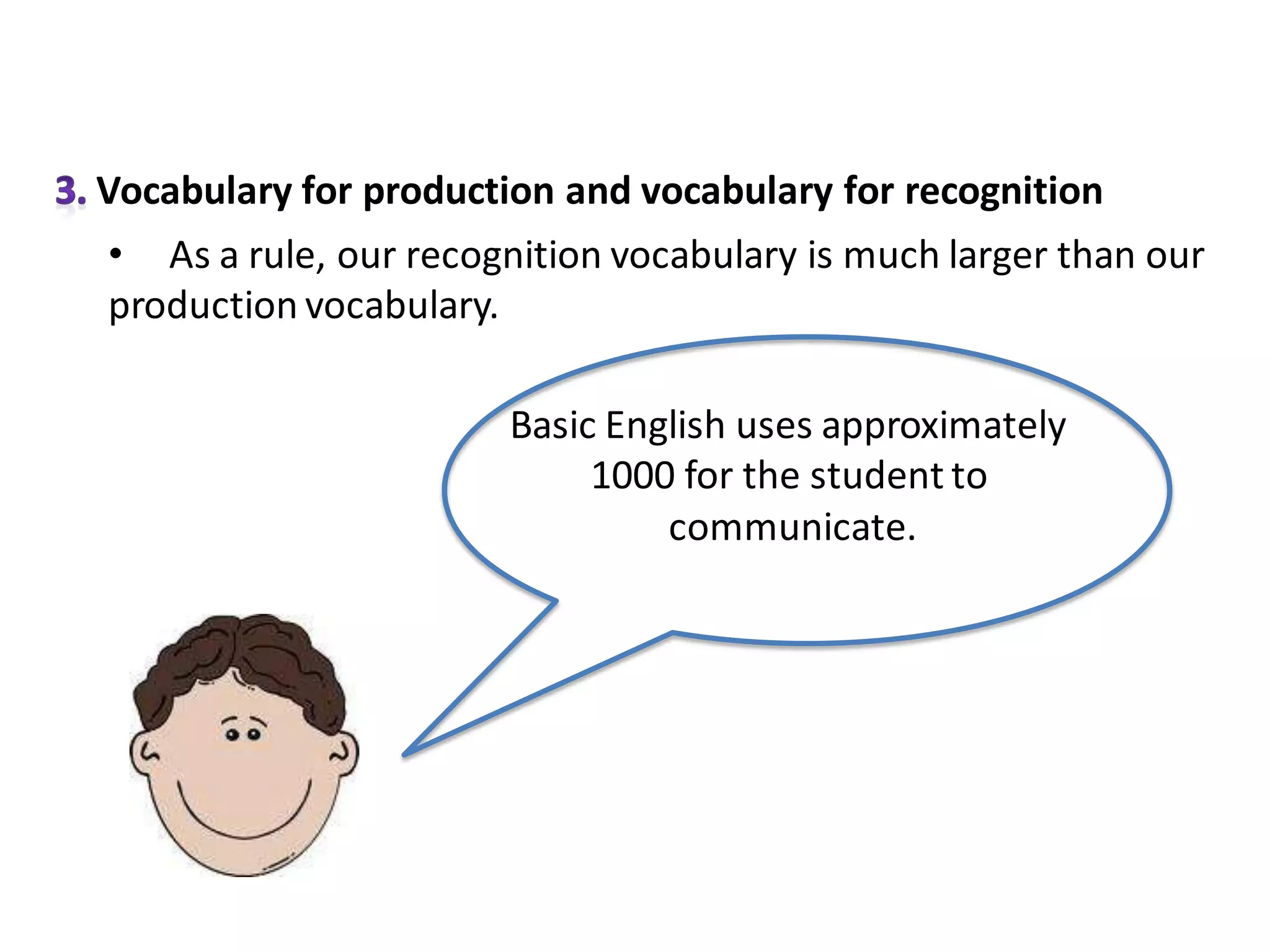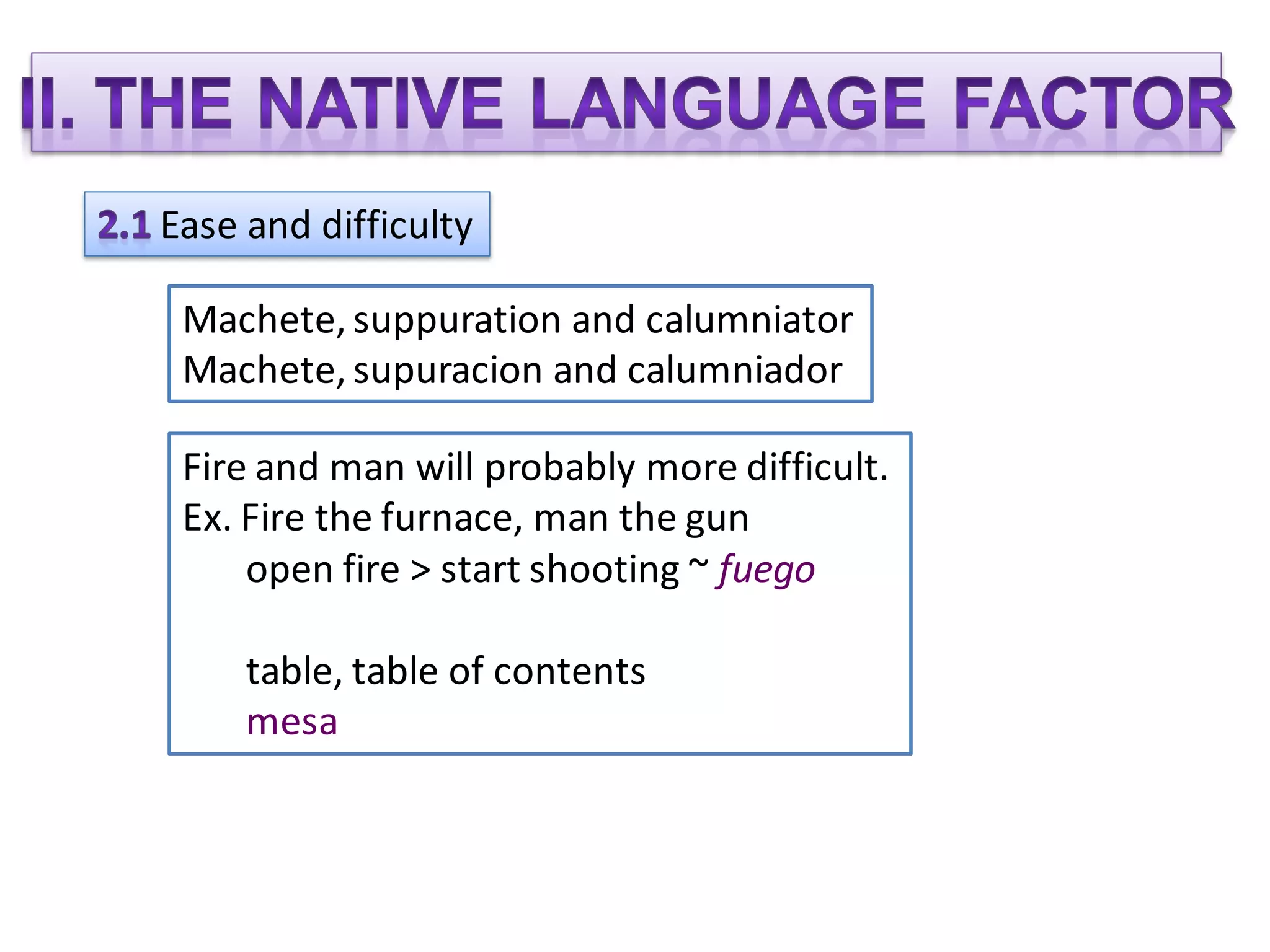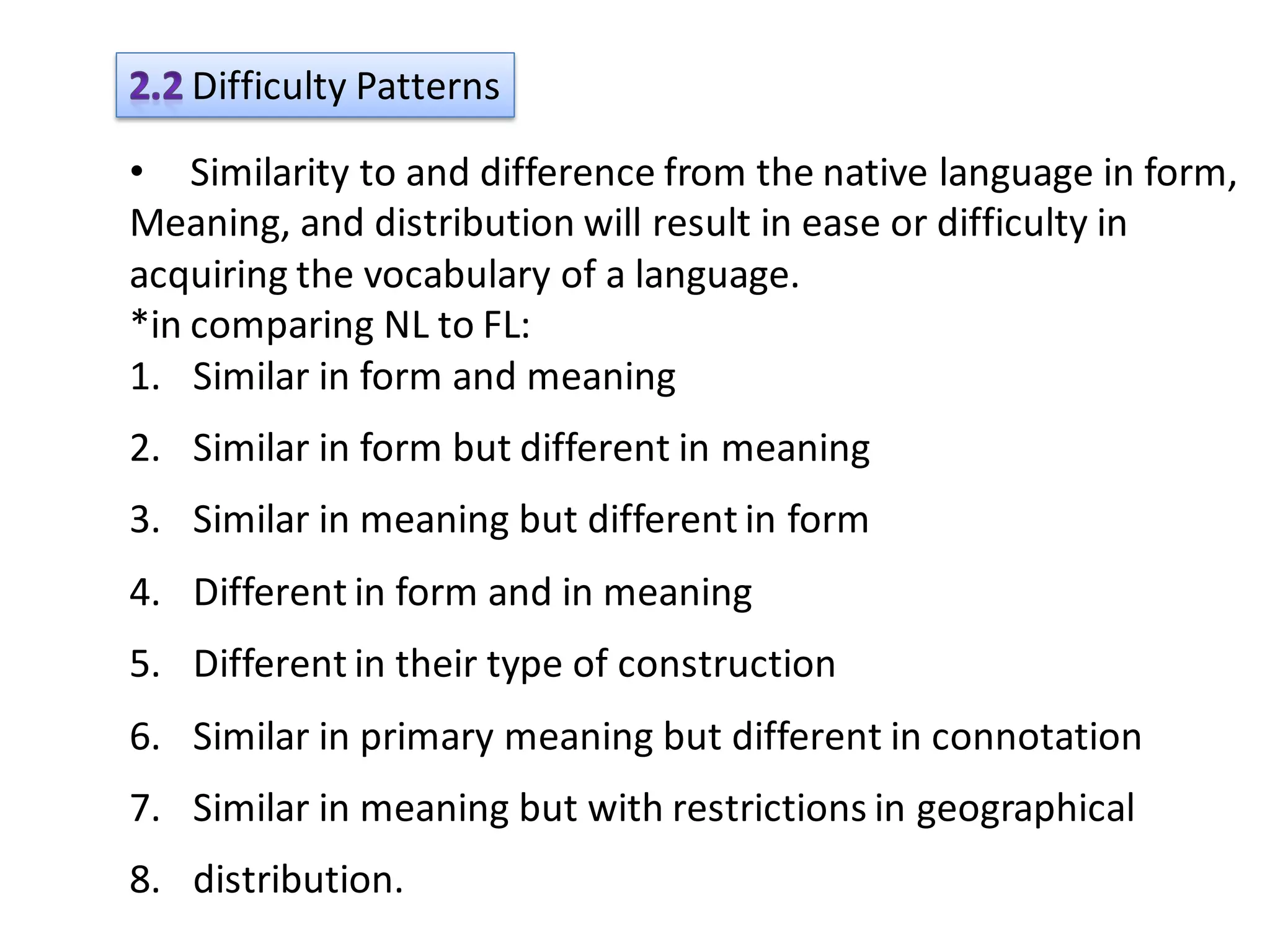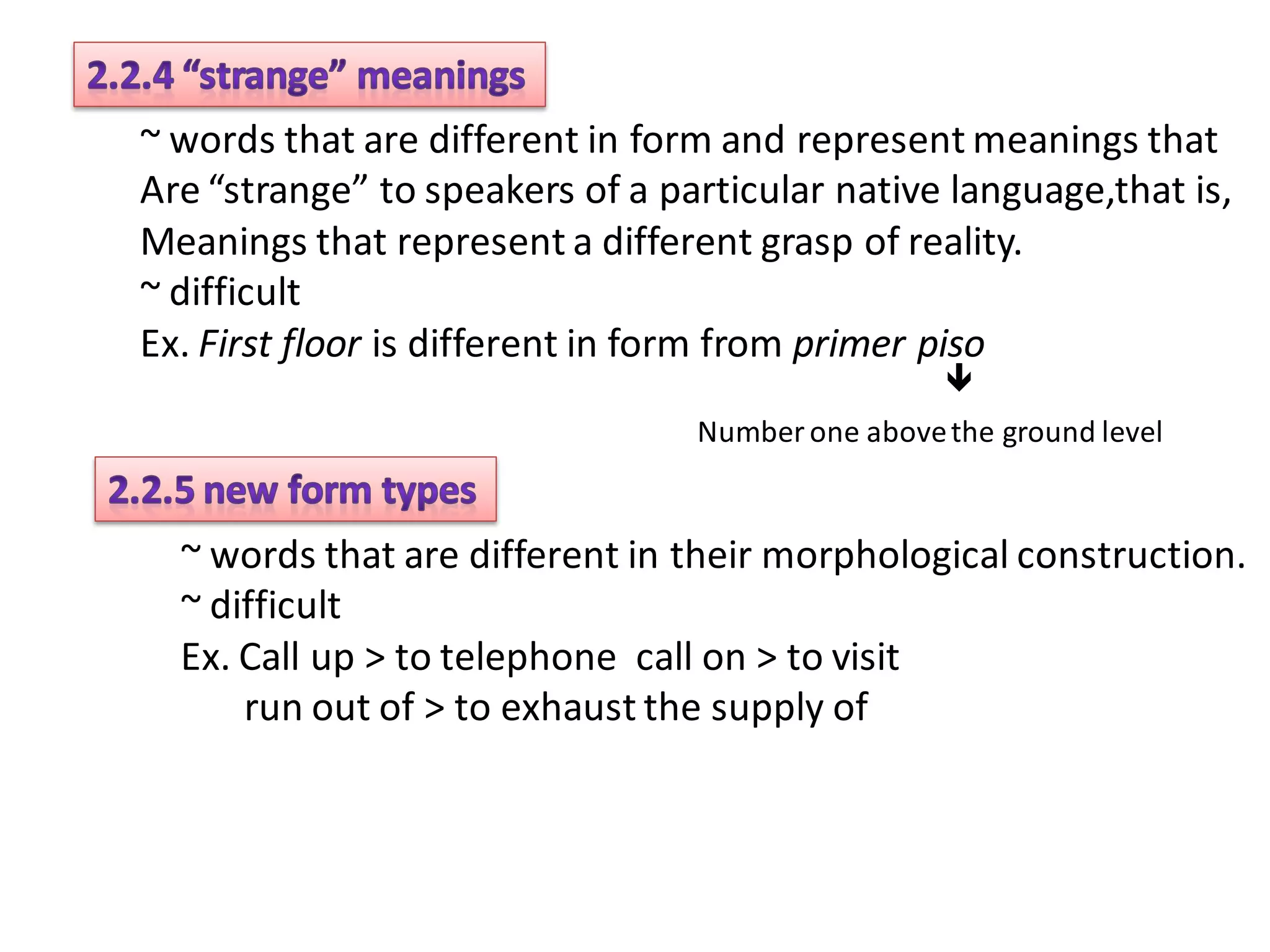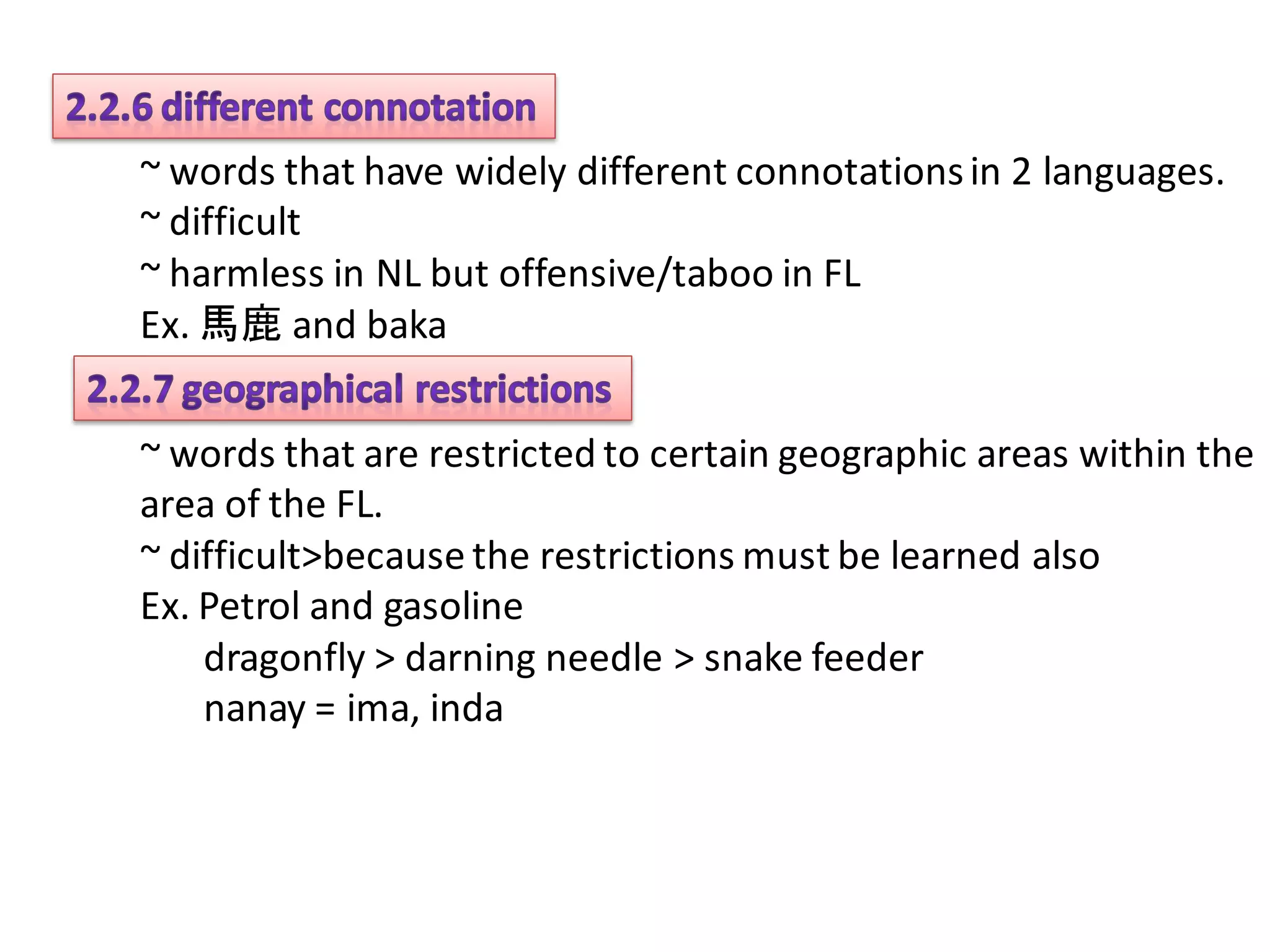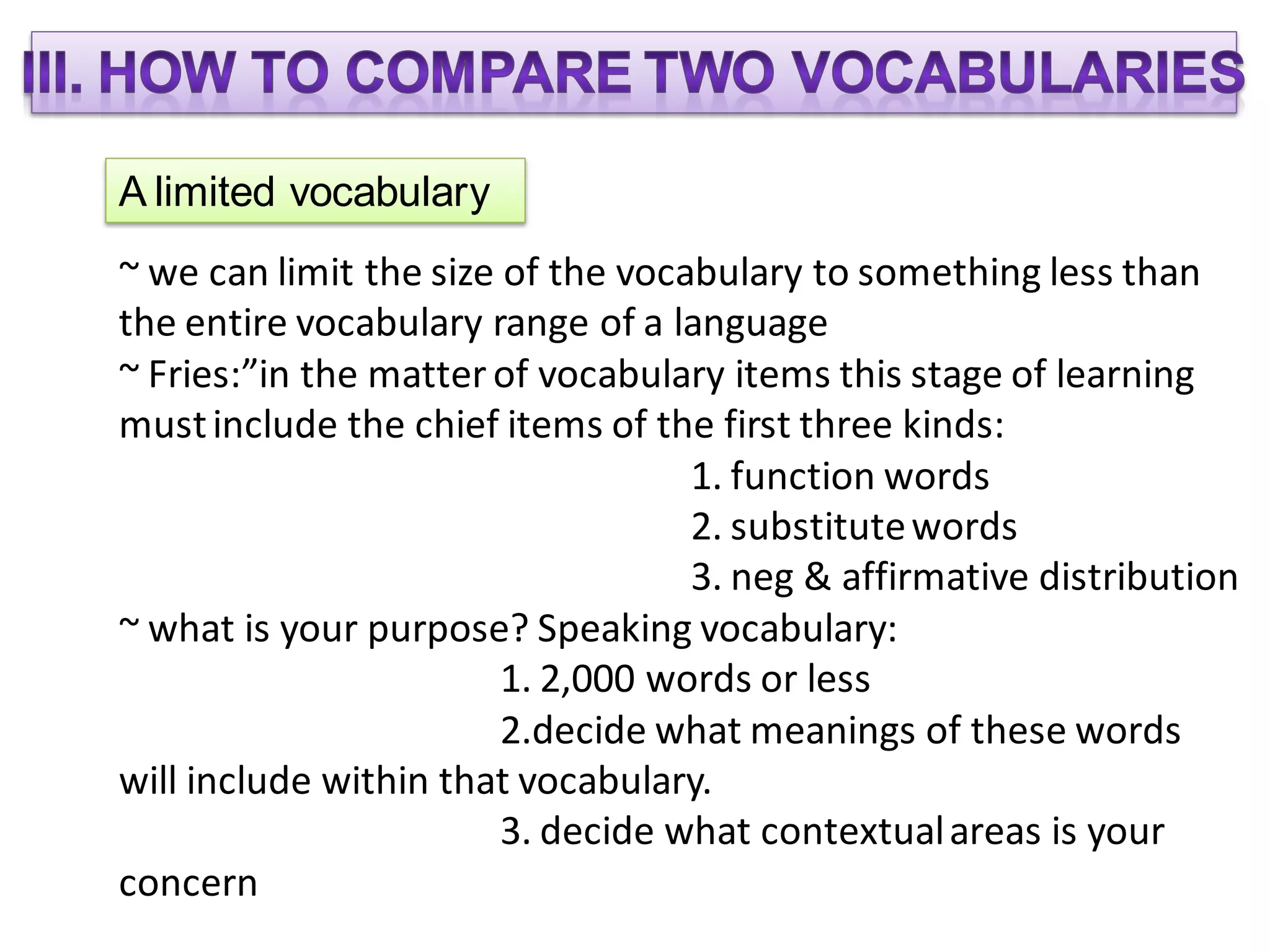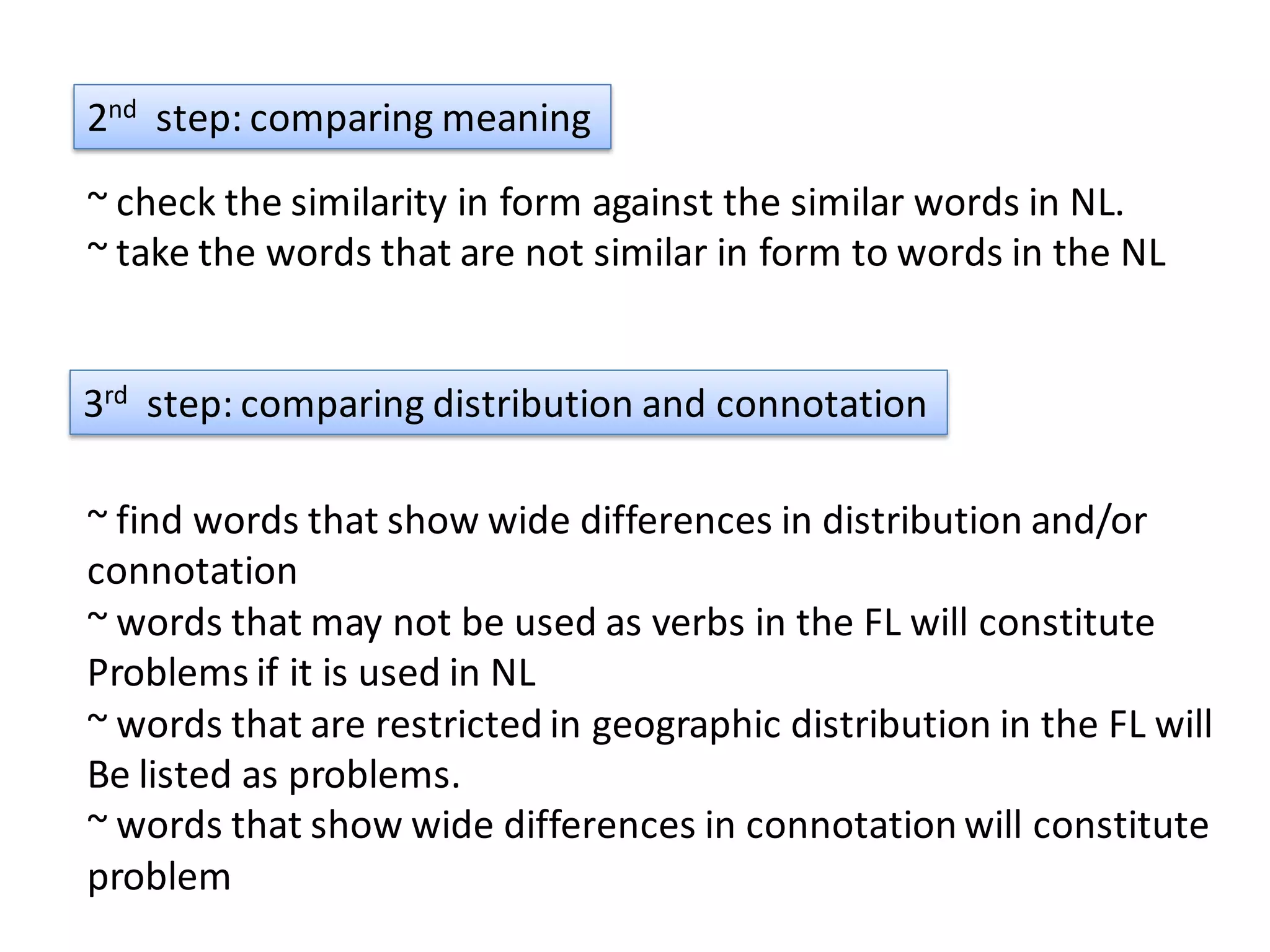This document discusses key aspects of words and vocabulary in linguistic study, including:
1. It defines words and phrases, with words being minimum free forms and phrases consisting of two or more lesser free forms.
2. It examines the three aspects of words: their form, meaning, and distribution. Meanings can vary across cultures and contexts.
3. It discusses ease and difficulty in acquiring vocabulary based on similarities and differences to one's native language in form, meaning, and distribution. Cognates are easier while deceptive cognates and words with different meanings are more difficult.
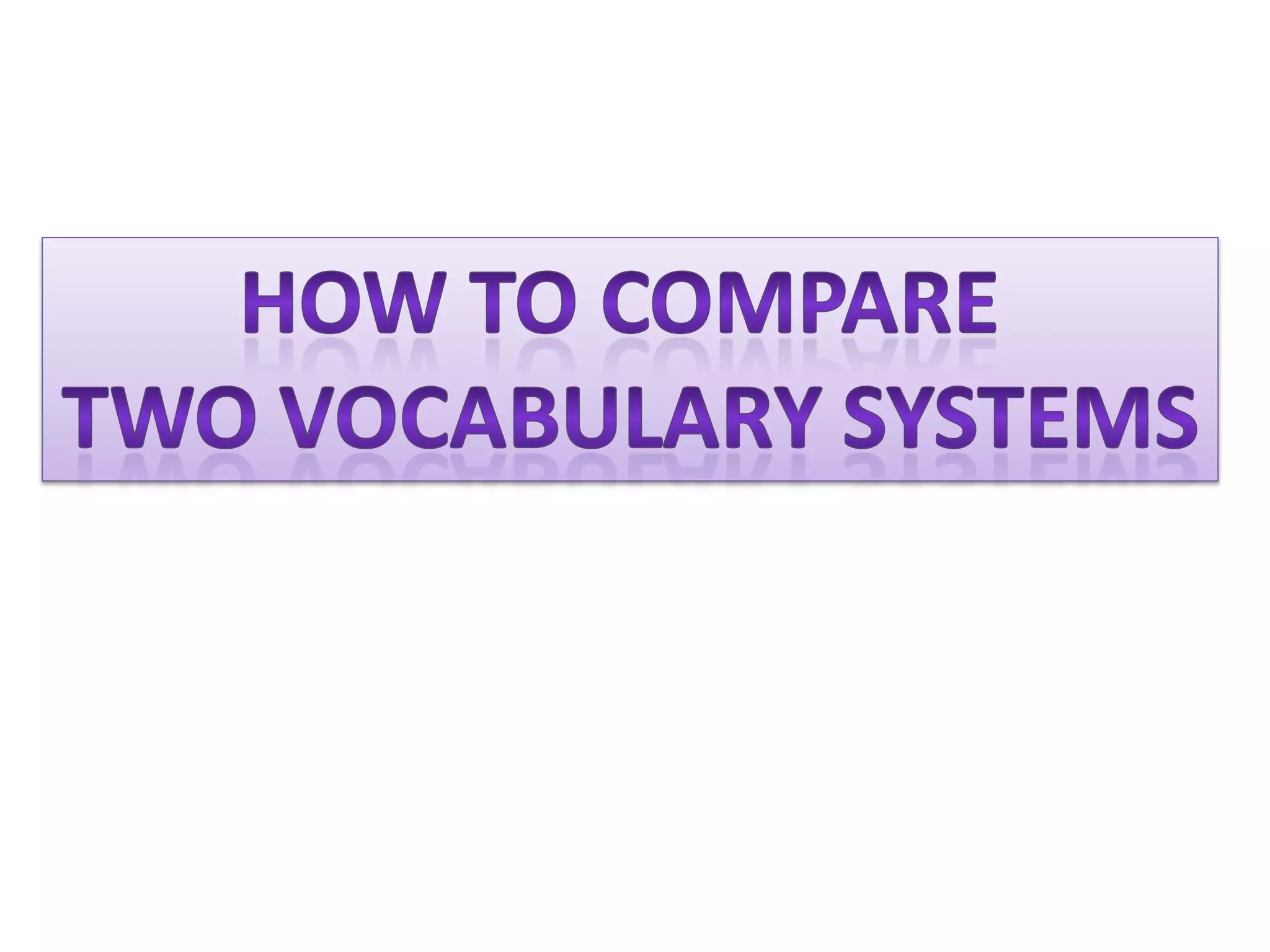
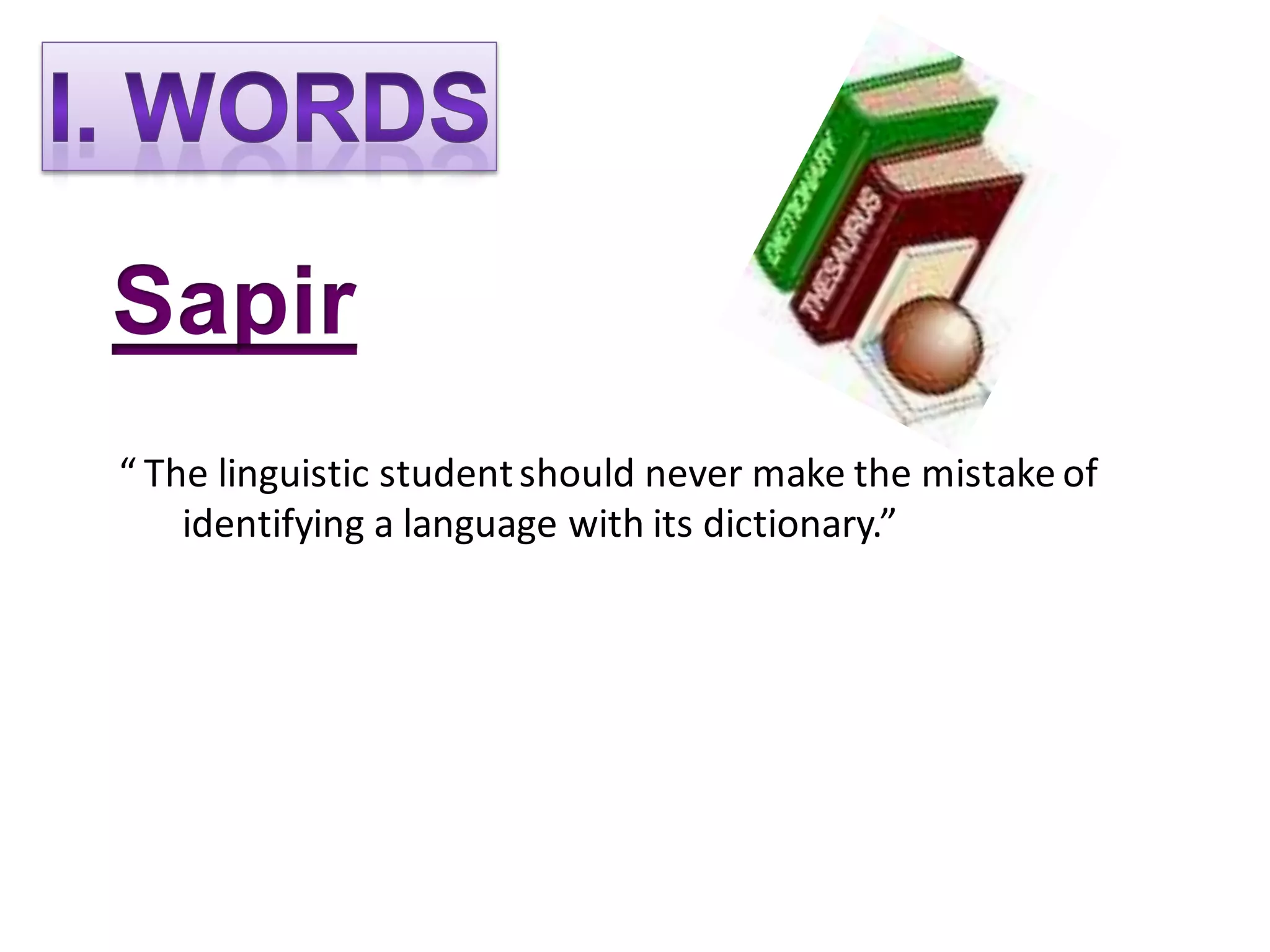
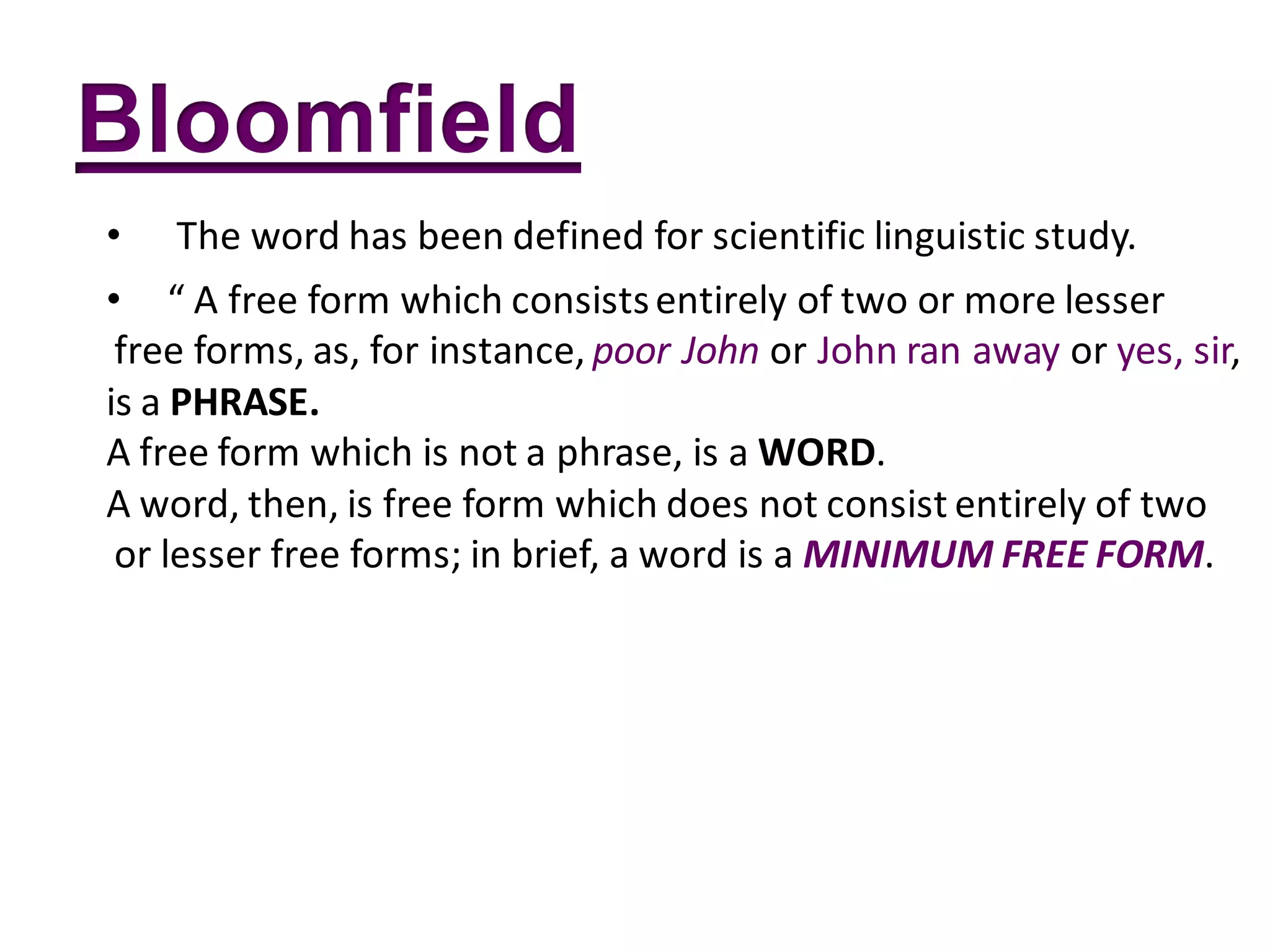
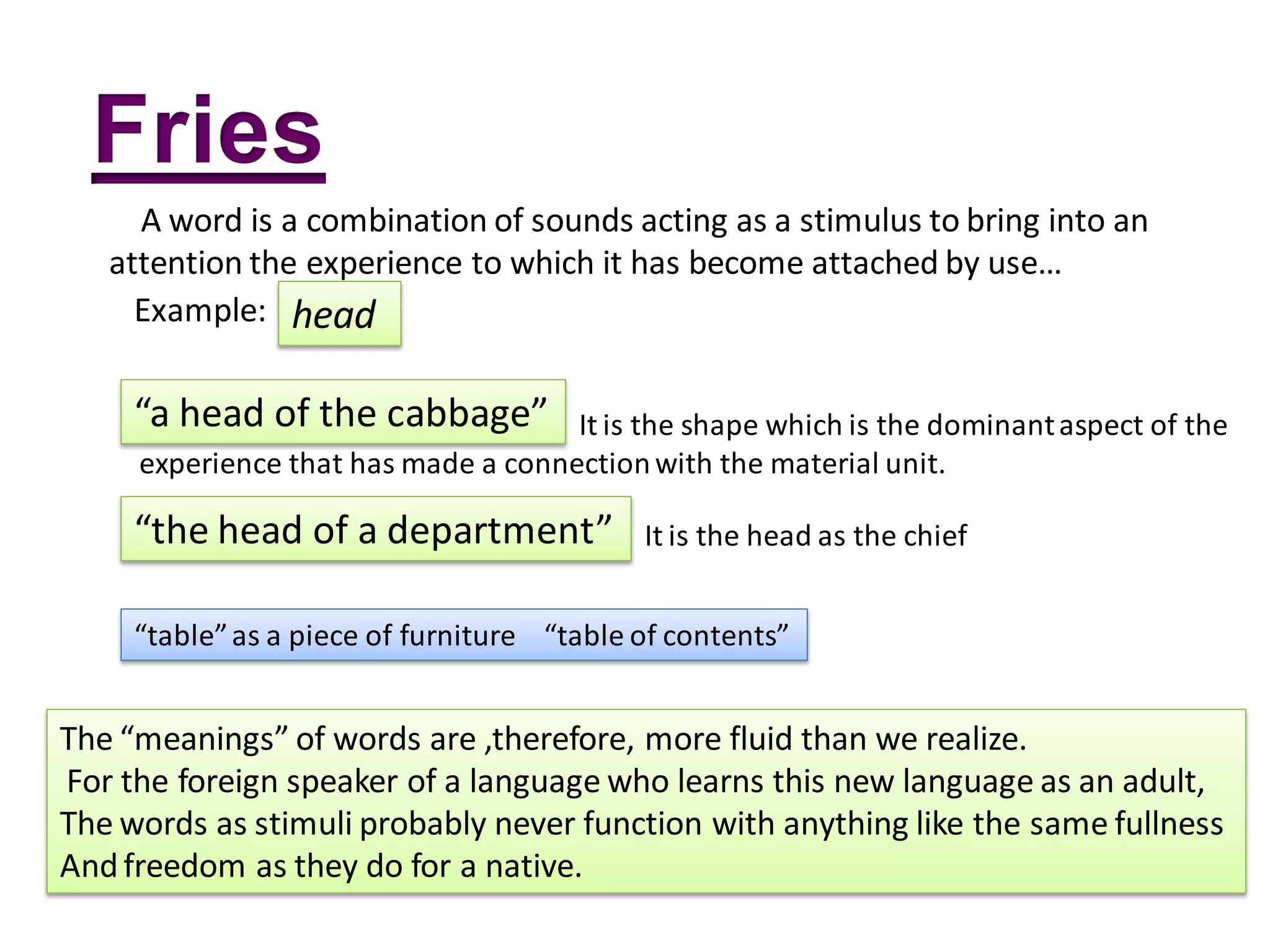
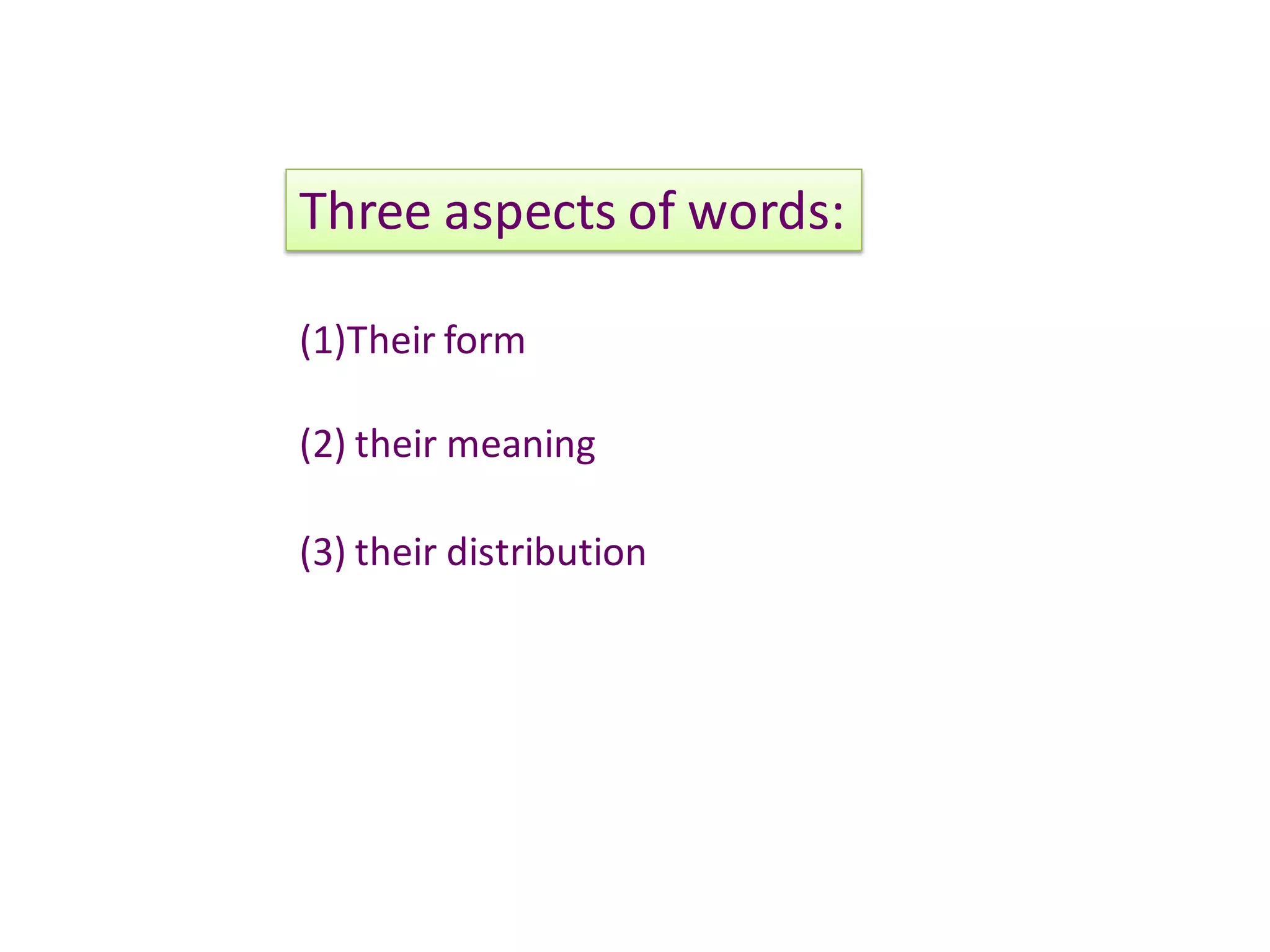
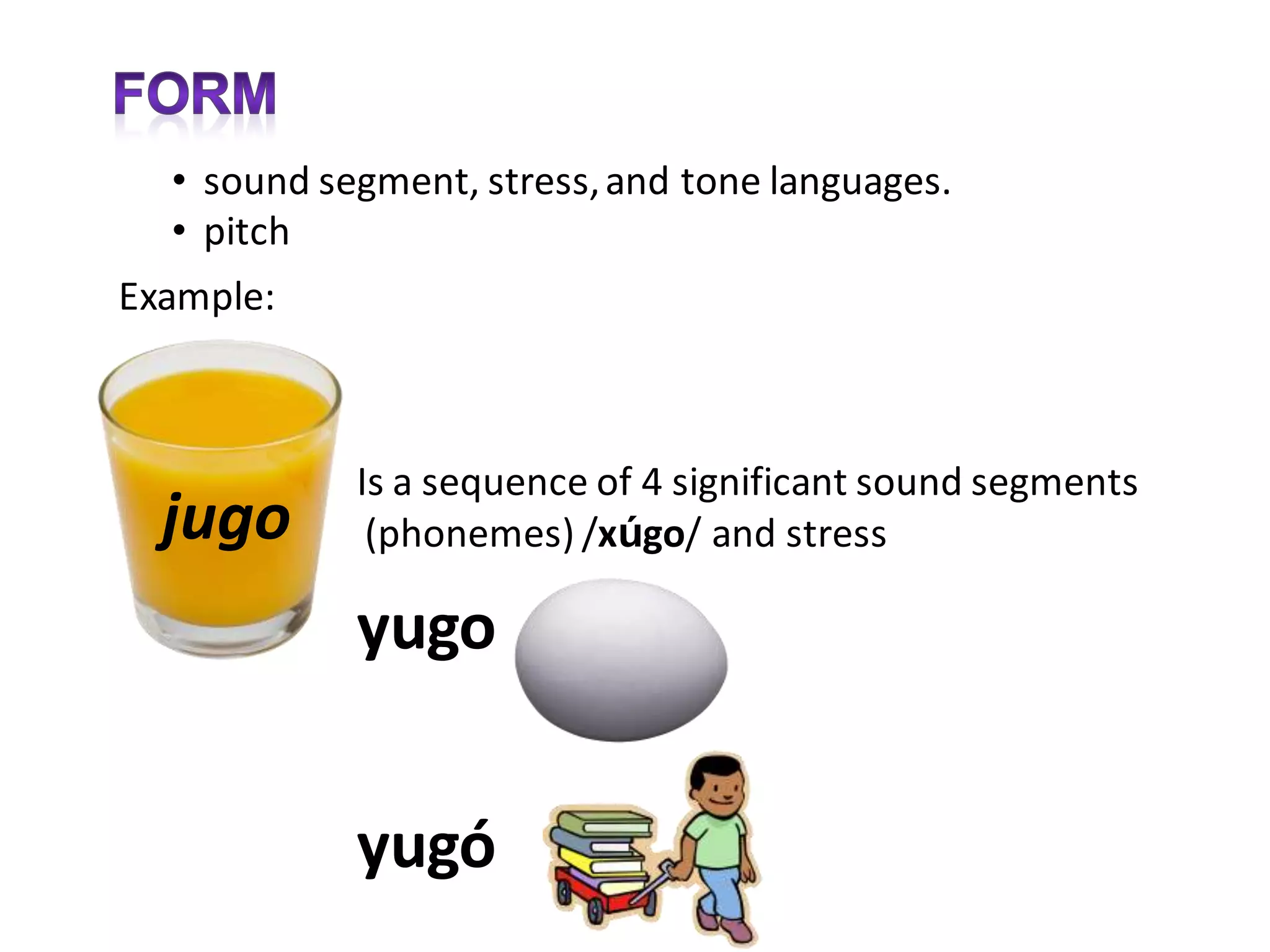
![• Meanings into which we classify our experience are culturally determined or
Modified and they vary considerably from culture to culture.
• some meaning found in one culture may not be exist in one another.
Example: the word “pasma” “horse”
“rikon” “potato”
• even when the reality is available to the culture, the meanings will differ
Example: eskimos have many distinctions correlating with different types of
snow
kanin, bahaw, bigas, tutong
• meanings that attach to words as words are LEXICAL meanings
Example: building > house
• meanings that attach to the bound form –s [s] can be called MORPHOLOGICAL
meaning.
• Is he a farmer? Is a SYNTACTIC meaning. But the meaning “question” attached
To the word form question is a lexical.](https://image.slidesharecdn.com/howtocomparetwovocabularysystems-110726050546-phpapp01/75/How-to-compare-two-vocabulary-systems-7-2048.jpg)


